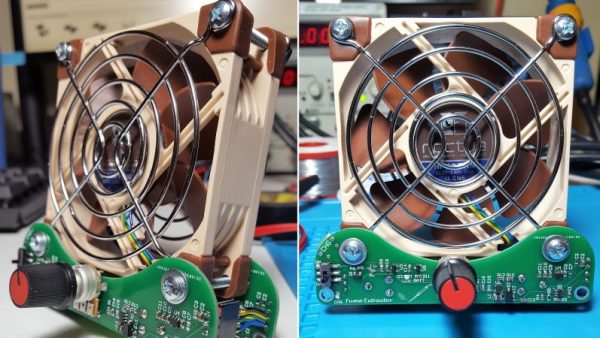No matter what kind of tools and materials you use in your shop, chances are pretty good that some process is going to release something that you don’t want to breathe. Table saw? Better deal with that wood dust. 3D-printer? We’ve discussed fume control ad nauseam. Soldering? It’s best not to inhale those flux fumes. But perhaps nowhere is fume extraction more important than in the metal shop, where vaporized bits of metal can wreak respiratory havoc.
Reducing such risks was [Shane Wighton]’s rationale behind this no-clean plasma cutter filter. Rather than a water table to collect cutting dross, his CNC plasma cutter is fitted with a downdraft table to suck it away. The vivid display of sparks shooting out of the downdraft fans belied its ineffectiveness, though. [Shane]’s idea is based on the cyclonic principle common to woodshop dust collectors and stupidly expensive vacuum cleaners alike. Plastic pipe sections, split in half lengthwise and covered in aluminum tape to make them less likely to catch on fire from the hot sparks, are set vertically in the air path. The pipes are arranged in a series of nested “S” shapes, offering a tortuous path to the spark-laden air as it exits the downdraft.
The video below shows that most of the entrained solids slow down and drop to the bottom of the filter; some still pass through, but testing with adhesive sheets shows the metal particles in the exhaust are much reduced. We like the design, especially the fact that there’s nothing to clog or greatly restrict the airflow.
Looking for more on CNC plasma cutter builds? We’ve got you covered, from just the basics to next-level.
Continue reading “CNC Plasma Cutter Filter Gets The Slag Out”

















